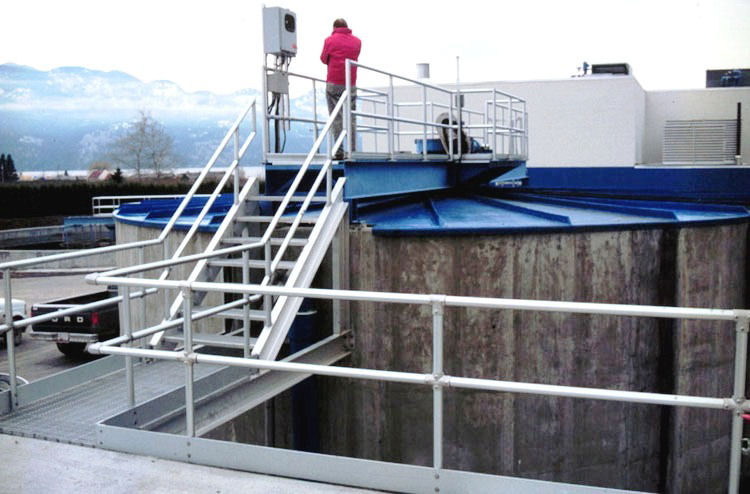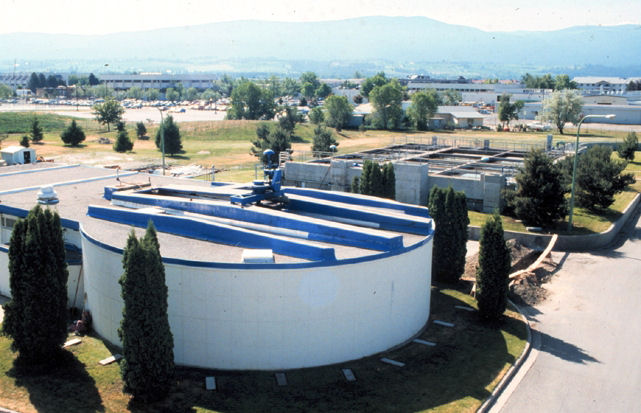Looking back at the most-attended technical session of WEFTEC® 2014 can give a taste of the type of information and education that will be available at WEFTEC 2015 in Chicago.
Technical Session 206, “The Complete Guide to Fermentation for Biological Nutrient Removal,” drew 220 attendees during WEFTEC 2014. The session covered biological nutrient removal (BNR), ussing microorganisms instead of chemicals to remove nitrogen and phosphorus from wastewater. The session included five presentations focusing on different aspects of fermentation within the process. WEF member James L. Barnard, global practice and technology leader of Black & Veatch (Overland Park, Kan.) has outlined the session and reviewed the content in his article, “The complete guideline to fermenters in biological nutrient removal.” Other highly rated speakers joined him in the session presentations:
- Ed Kobylinski and Barnard gave information on fermentation fundamentals for enhanced biological phosphorus removal.
- Barry Rabinowitz discussed conventional primary sludge fermentation configurations for enhancing biological nitrogen and phosphorus removal.
- Christine DeBarbadillo talked about mixed liquor and other fermentation alternatives for providing volatile fatty acids to enhanced biological phosphorus removal processes.
- Gerry Stevens presented on fermentation operational considerations.
- Peter Schauer discussed the operational considerations of primary sludge gravity fermenters.
The session began with Barnard describing major BNR research findings beginning with those in the 1960s. He described the role volatile fatty acids play in BNR and how the anaerobic zones allow phosphate-accumulating organisms (PAO) to take up volatile fatty acids and release phosphorus in that zone.

Fermenters are covered to control odors. The Regional District of Central Okanagan in Kelowna, Bristish Columbia installed the world’s second fermenter at the Westside Regional Wastewater Treatment Plant, previously known as the Westbank Wastewater Treatment Plant, said James Barnard. Photo courtesy of Gerry Stevens and the Regional District of Central Okanagan.
“The anaerobic zone should thus be seen as a fermenter more than a mere contact zone, and the less nitrates and DO [dissolved oxygen] present, the more fermentation takes place,” according to Barnard. He also explained that fermentation produces acetic and propionic acid; in anaerobic digesters, these compounds are degraded by methanogens to produce methane gas.
Rabinowitz described various options for fermenting primary solids. He said the goal was to hold the solids for 2 to 8 days to allow acid fermentation without producing methane. Basic schemes to achieve acid fermentation include activated primaries, static fermenters, and two-state mixed fermenter/thickeners. Barnard summarizes Rabinowitz’s description of these technologies as well as the benefits and drawbacks for each in his article.
DeBarbadillo discussed alternatives for fermenting some of the mixed liquor or return-activated sludge for supplying necessary volatile fatty acids. Alternatives include mixed liquor fermentation, where aeration near basin inlets is switched off to allow mixed liquor sludge to settle, ferment, and pass volatile fatty acids to the mixed liquor and achieve phosphorus removal. She presented various examples of successful return activated sludge (RAS) applications as well as methods to keep PAOs alive during fermentation. She also described innovative uses of existing facilities to achieve RAS.

The City of Kelowna, British Columbia installed the world’s first fermenter at the Kelowna Wastewater Treatment Facility. Photo courtesy of Gerry Stevens and the City of Kelowna.
Stevens discussed successful operation of primary sludge fermenters in Western Canada. And Schauer described operational issues of a two-stage fermentation/thickener and of a fermenter for strong sugar waste, discussing control parameters used by operators.
“The session was well received and participation was encouraging,” Barnard said. He encourages anyone interested in the topic to learn more details from the session in the WEFTEC 2014 Conference Proceedings.
— Jennifer Fulcher, WEF Highlights









April 29, 2015
Featured, WEF Resources & Efforts